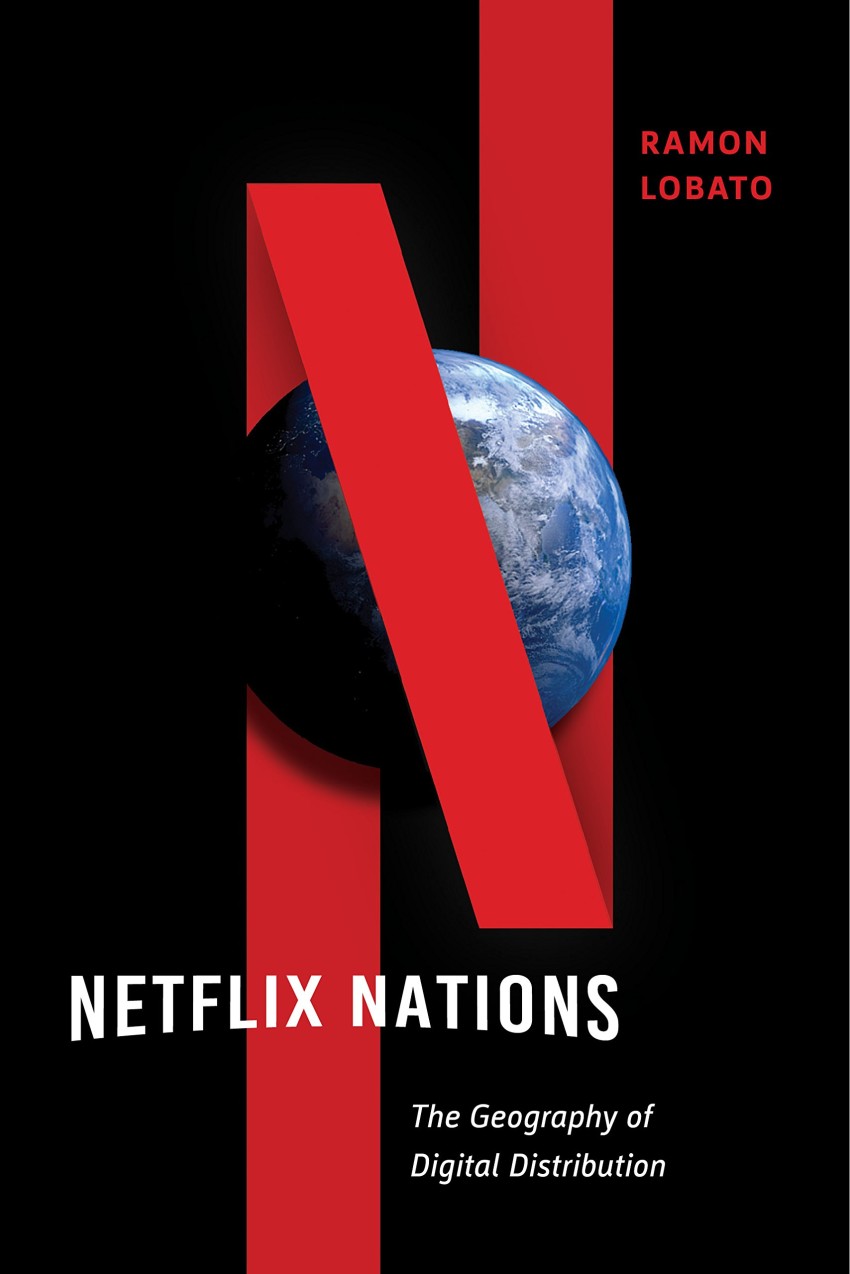Books: Netflix Nations
December 30, 2019 · 0 comments
By Jonathan Clements.
 In a publicity coup to rival no other in January 2016 at the Las Vegas Consumer Electronics Show, Netflix CEO Reed Hastings announced that while he had been talking, Netflix had rolled out (at least in theory) in 130 countries, including Azerbaijan, Vietnam, India, Nigeria, and Poland. It’s a suitably grandstanding opening for Ramon Lobato’s book Netflix Nations: The Geography of Digital Distribution, which aims to explain just what has happened in the last few years in the world of digital distribution.
In a publicity coup to rival no other in January 2016 at the Las Vegas Consumer Electronics Show, Netflix CEO Reed Hastings announced that while he had been talking, Netflix had rolled out (at least in theory) in 130 countries, including Azerbaijan, Vietnam, India, Nigeria, and Poland. It’s a suitably grandstanding opening for Ramon Lobato’s book Netflix Nations: The Geography of Digital Distribution, which aims to explain just what has happened in the last few years in the world of digital distribution.
Times move fast. My own Anime: A History, for example, finishes in 2012, with the shut-down of Japan’s analogue broadcast signal, but Netflix didn’t even start in Japan until three years later. This year at Scotland Loves Anime, festival juror Jack Liang showcased the first episode of Polygon Pictures’ new show, Levius, which was made for Netflix. Lobato quotes one television theorist in 2014 who notes that the big difference between HBO and Netflix is that one arrives over cable, and the other over broadband, “a distinction I suspect will be technologically nebulous the next time I revisit this book.” A distinction, in fact, that is already a matter of history.
 Lobato doesn’t disappoint in his deconstruction of digital streaming, with all sorts of interesting comments on, for example, the 2015 redesign of the Netflix menu screen to hide the finite nature of the content available. A history of conflicts over television broadcasting sets the scene, peppered with useful concepts like signal spillover, and handy differentiations in the nuances between transnational and global. He observes the palpable effect that Netflix has had on shutting down piracy, at least in some cases. As Reed Hastings commented in 2015: “The key thing about piracy is that some fraction of it is because [users] couldn’t get the content. That part we can fix. Some part of piracy, however, is because they just don’t want to pay. That’s a harder part.”
Lobato doesn’t disappoint in his deconstruction of digital streaming, with all sorts of interesting comments on, for example, the 2015 redesign of the Netflix menu screen to hide the finite nature of the content available. A history of conflicts over television broadcasting sets the scene, peppered with useful concepts like signal spillover, and handy differentiations in the nuances between transnational and global. He observes the palpable effect that Netflix has had on shutting down piracy, at least in some cases. As Reed Hastings commented in 2015: “The key thing about piracy is that some fraction of it is because [users] couldn’t get the content. That part we can fix. Some part of piracy, however, is because they just don’t want to pay. That’s a harder part.”
Lobato details in depth with the panoply of widgets, laws and infrastructures required to put an episode of, say, Evangelion on your television, and the degree to which such provisions tie up local bandwidth in different countries. He details Netflix’s cunningly low-tech Open Connect service, which puts an actual, physical box into the server farms of 1,000 Internet Service Providers around the world, so that Netflix users can go direct to a particular machine for their content. In other words, it is “a private network built on top of the public internet.”
Faithful to his arguments in his earlier Shadow Economies of Cinema, Lobato includes “informal” distributions, such as BitTorrent, in his account of the legal world of streaming, and also notes that even legal streaming can run into unexpected walls – Netflix itself was blocked in Indonesia over “permit issues”, and cannot be streamed in Syria, North Korea and Crimea because of American foreign-policy restrictions on doing business in those territories.
In terms of content, Lobato shows how MTV’s initial idea of exporting American pop culture to the world foundered when it turned out that viewers in far-flung territories like India and Korea didn’t particularly care for the likes of Michael Jackson, and preferred local stars. If only that were true. I recall once being trapped in a Beijing hotel room with a sick child for days on end, and commenting: “Who the hell is Nicki Minaj, and why does she keep showing up on a Chinese television?”
The idea of imposing cultural exports globally evolved into a “glocal” set of parameters tailored to local requirements, such as an age verification stage in Singapore, and an “Australian movies” tag in Australia, but also a translation testing program called Hermes, which from 2017-18 attempted to examine and standardise the army of human translators who prepared the company’s subtitles.
Amid several national case studies, Lobato includes Japan, where Netflix rolled out in September 2015 for 650 yen a month, little more than a paper manga anthology magazine. Entertainingly, in a reaction to the conspicuously un-Japanese content of Netflix’s original offerings, the channel became known as the Black Ships (kurofune), in reference to the gunboat diplomacy of Commodore Perry in the 19th century.
“Netflix was especially criticized for its measly collection of anime, which is a must-have for any streaming service in Japan. To be fair to Netflix, this anime deficit was not entirely the company’s fault. Netflix found it very difficult to license high-quality anime, reflecting its wider problem of securing rights to Japanese content.”
Netflix fought back by signing co-production deals with Fuji in 2015 and, in 2017, announcing it was throwing money at twenty new anime shows. Compare this to China, where Lobato’s case study rewardingly engages with a territory where Netflix has failed to roll out, preferring instead to licence selected content to local services.
The disruptive potential of Netflix has been felt at every stage of the chain from Ownership to Access. Cosplayers show up at conventions dressed as characters who won’t appear on Blu-ray for years. Water-cooler conversations about last night’s television have been shattered into multiple nodes. Some people have seen all of the new series of Orange is the New Black, the day after it dropped. Others won’t get to see it for months. Many Japanese animation studios are booked up three years in advance on projects for overseas streaming sites. This doesn’t stop them taking work from other clients, of course, although the canny media watcher will have noticed that some of these projects have been passed under-the-counter to Korean subcontractors.
Lobato closes with a chapter on geo-blocking and VPN access, irresistibly titled “The Proxy Wars”, and dealing with Netflix’s changing attitude towards those users who used Virtual Private Networks to game Netflix servers into thinking they were watching in another country. But he is the first to admit that there is more to be written about the disruption brought about by digital access, not the least the peculiarities of Netflix’s original production strategy, “which really deserves its own book.” For the meantime, however, Netflix Nations is a richly detailed account of changes to the media that have come so fast that many users have yet to appreciate the differences they have wrought.
Jonathan Clements is the author of Anime: A History. Netflix Nations: The Geography of Digital Distribution is available from New York University Press.
Leave a Reply